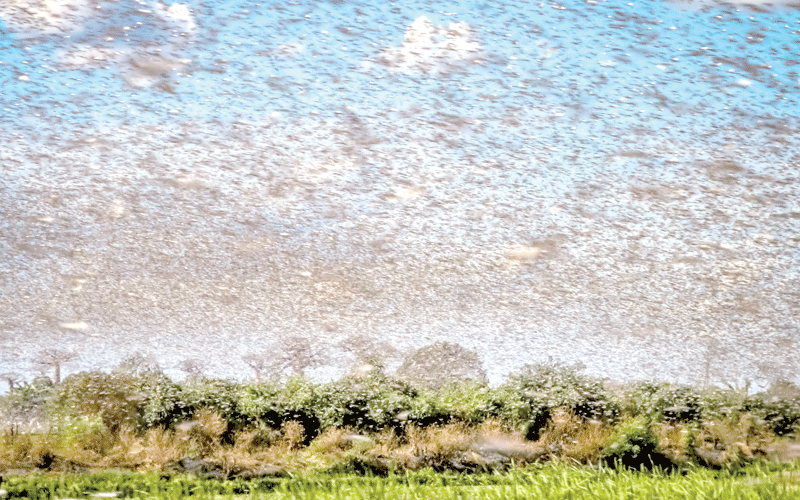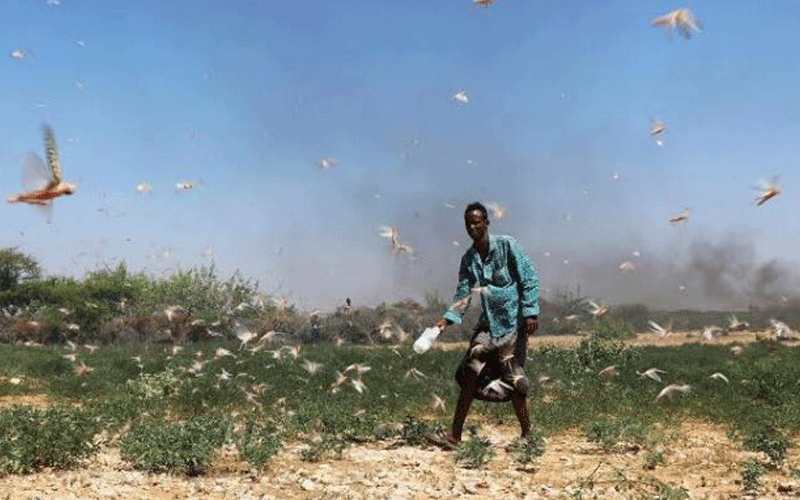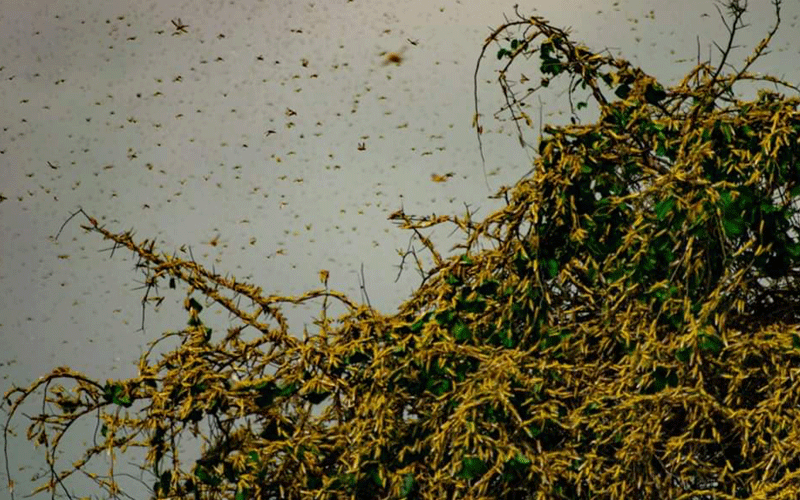Woman travels over 150km to witness locust invasion in mother’s farm

At around 3 pm on Tuesday, a middle-aged Jedidah Nyambura from Mukurwe-ini in Nyeri County heard a strange sound.
It was a sound she had never had before, she said.
On looking outside, Nyambura said that she saw a dark cloud descending on her farm. She saw small insects that appeared like tiny butterflies and upon taking a closer look, her worst fears were confirmed. A locust invasion.
When the insects finally landed, Nyambura said she just watched helplessly as the locusts swarmed her farm.
“They haven’t stopped eating since yesterday,” said Nyambura.
Nyambura called her daughter who travelled from Nairobi just to witness the invasion.
At the farm, the swarm began devouring tree leaves, then shrubs and slowly descended to ground vegetation. Behind, the swarm left thin stalks after eating every single leaf.
The same swarm that landed in Nyambura’s farm had earlier been spotted in Mwea villages within Mukurwe-ini sub-county.
Nyambura described in despair the damage that the swarm caused 18 hours later.
“The locusts have eaten all the fruit trees that I planted a few weeks ago. In a few hours, they ate everything and I will be staring at hunger,” said Nyambura.
Read More on Locusts; Scientists raise red alert over desert locusts invasion
Many locals in the area where the swarm landed are small-scale farmers, mostly mixing coffee, tea and cattle.
“We have bananas, arrow roots, maize and other such crops that we depend on every day,” said another resident.
How they landed in Kenya
Swarms of desert locusts landed first landed in the country in December 2019.
From Somalia, they flew to Wajir, Mandera, Marsabit and Isiolo counties.
By mid February, they had spread to Kitui, Kajiado, Murang’a and Kisumu counties. Some swarms have even reached parts Uganda.
On February 17, Agriculture Cabinet Secretary Peter Munya said that the swarms in the country should not cause panic as they are destined to ‘die of old age’.
Munya said that the locusts are in the last growth cycle and won’t eat as much.
The CS was speaking at Gakurune Primary School in Meru County. Leaders of areas that were infested had attended Munya’s meeting.

Further, Munya said that the government is looking for experts to help curb the generations of desert locusts left behind.
The state also announced to have trained at least 300 personnel from the National Youth Service to spray the swarms.
Author
Njange Maina
Njange Maina is a journalist by profession with a degree in Journalism from the Multimedia University of Kenya. He is currently pursuing a micro-masters degree in Digital Branding and Marketing. He is interested in digital media, human interest stories, and business journalism.
View all posts by Njange Maina














